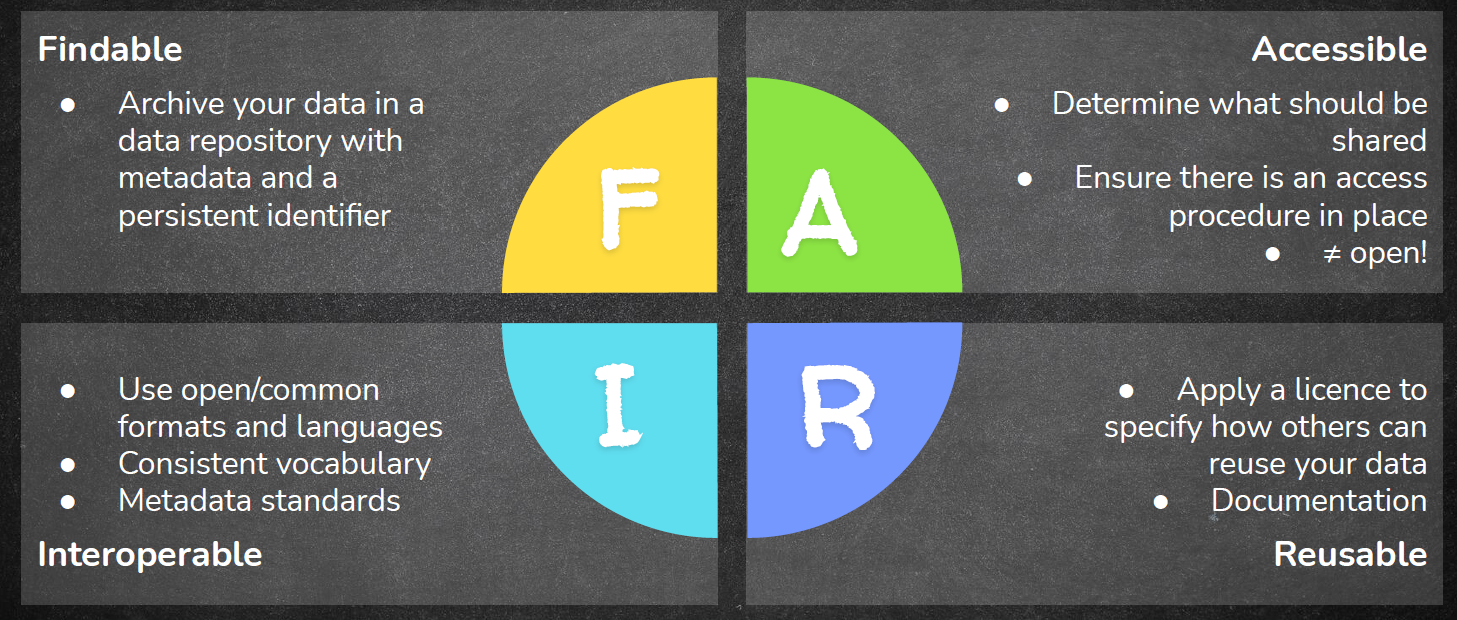The FAIR principles were created in order to maximize the reuse of scientific data, to promote best practices on Research Data Management and to enable Open Science. Applying the FAIR principles means to make research data and software Findable, Accessible, Interoperable and Reusable (Wilkinson et al. 2016; Barker et al. 2022).
- Findable means that others (both human and machines) can discover the data
- Accessible means that the data can be made available to others
- Interoperable means that the data can be integrated with other data and can be easily used by machines or in data analysis workflows.
- Reusable means that the data can be used for new research
These four principles should be applied (as much as possible) throughout the entire research cycle and they are closely interconnected with each other.
The FAIR Data principles are NOT:
- A standard. The FAIR principles need to be adapted and followed as much as possible by considering the research practices in your field. FAIR principles should be rather seen as progressive steps that help you make your data re-usable.
- Equivalent to Open Data. FAIR data does not necessarily mean openly available: it should be clear to others that the data exists and which steps they could take to potentially access the data.
- Applied using a particular technology or tool. There might be different tools that enable FAIR data within different disciplines or research workflows.
There are important elements to consider within your research workflows if you aim to make the data of your project FAIR:
Software
See the five recommendations for FAIR software website for more information.
More information
This content is partially based on Martinez-Lavanchy et al. 2022.
